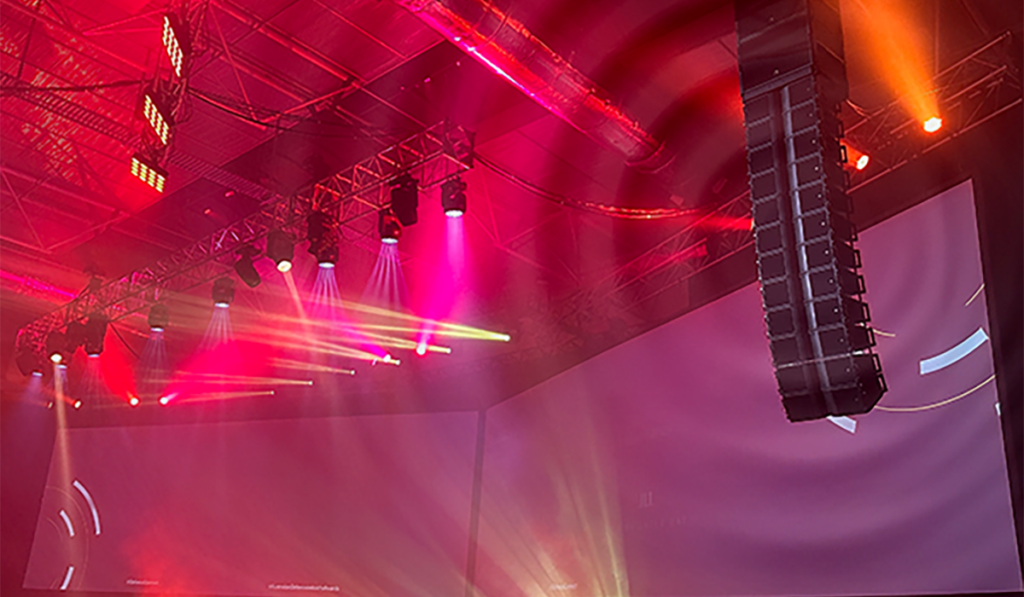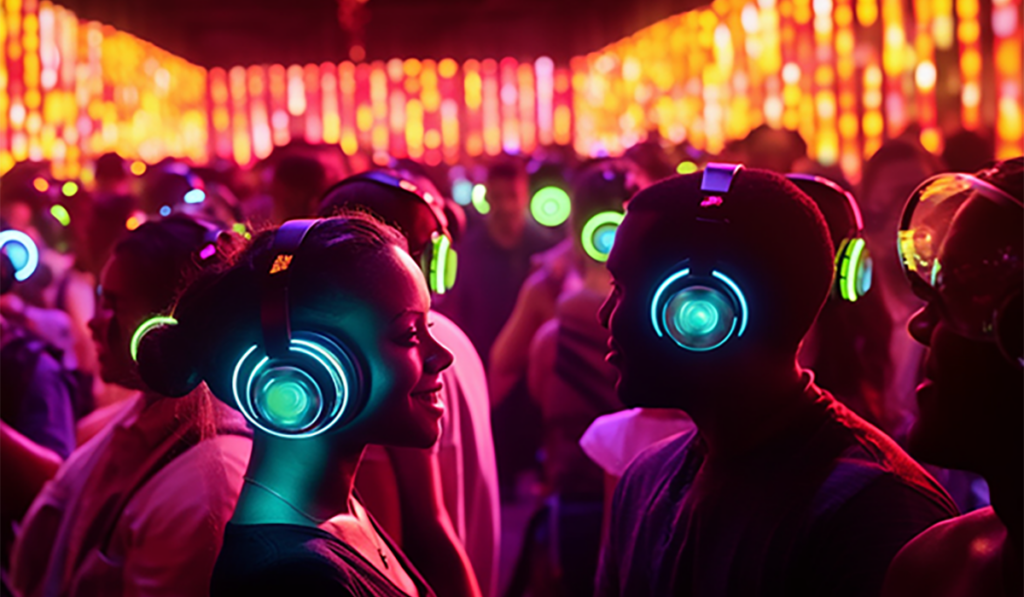Related Posts
Tags
From sound effects to targeted audio, learn how to amplify participant experiences
Sounds provoke powerful emotions. The sound effects in a movie make us lean forward with anticipation or jump in surprise. A song on the radio has the power to transport us to another time and place instantly. Conversely, when you can’t hear what’s going on, you tune out. And when sound quality is degraded, it negatively affects people’s ability to communicate, learn and focus. That’s why sonic engagement is a powerful tool in any meeting or event professional’s arsenal.
According to the National Institutes of Health, when people hear sound, it ‘lights’ up brain areas involved in emotion, memory and even physical movement. That’s why intentionally chosen music, video stingers and well-produced high-quality audio amplifies the emotional impact of a conference program and makes it more memorable. Let’s examine how integrating sound and engaging participants’ hearing can enrich onsite events.
Want an in-depth look at audio strategies that improve the attendee experience? Download our free guide for more pro tips and smart insights.

One in eight people in the United States over the age of 12 has hearing loss in both ears. Nearly ten percent of adults between the ages of 55 and 64 have disabling hearing loss. That’s why it’s important not to cut corners on how you employ traditional event audio tools. It’s important that the correct type of amplification is used throughout your event spaces to deliver high-quality audio.
Traditional sonic tools and technologies include:
- Speakers
- Microphones
- Monitors
- Audio mixers
- Closed captioning
- Simultaneous translation
To aid comprehension, consider close-captioning event audio for the in-person audience. This not only helps the hearing disabled, but also for non-native English speakers. Simultaneous translation, whether AI-generated or using a live translator, is a must for international meetings.
Setting the mood with music

Music sets audience expectations and influences their mood. For example, playing ambient jazz can help participants relax before you discuss difficult topics. If you’ve had people sitting in meetings all day, dance music can boost their mood and get them excited for evening activities.
For any public event, music played needs to be properly licensed. Your pro subscription to a streaming service won’t protect you or your organization from liability if you’re caught playing a personal playlist.
One solution is Encore Music. It offers more than 1,000 curated and properly licensed music playlists for commercial background music use. It also offers a royalty-free music solution with more than 100,000 tracks, sound effects and loops for virtual/hybrid events and stingers that you can edit and use for videos, motion graphics and walk-in/walk-out music.
Combining sound with other senses to create more inclusive events

Some audio technologies engage the sense of touch as well as hearing. One such tech tool is a throwable microphone, called a Catchbox. It’s a fun way to keep your audience engaged. Audience members can toss the Catchbox to each other instead of waiting for mic runners to reach them. Because people don’t have to move from their seat to be heard, it also makes it easier for people with physical disabilities or more introverted dispositions to join in the conversation.
Examples of using sound to create
multisensory experiences

When you’re creating an immersive experience, pay attention to the sound design. Sound effects and cues provide subtle information about our environments and can reinforce the illusion you’re creating. For example, the sound of waves and seagulls transport us to the beach; crickets remind us of relaxing summer evenings.
Flying speakers from rigging gives you better sonic coverage of large spaces than floor-based speakers do. But did you know it also gives you the ability to create directional audio? When sounds ‘move’ from one speaker to another in sequence, it immerses the audience in a sonic bath that moves from one side of the room to the other. This can emphasize motion graphics, key presentation points and complete the feeling of being in a dynamic environment.
Targeted audio can create sonic zones. Museums often use this to educate people as they look at a specific item. Targeted audio can only be heard within a tight radius. Once you move outside that cone of sound, the audio disappears. It’s a fantastic solution for trade shows when you don’t want sound to bleed over from one booth to another.
Next-generation event audio engagement

Wireless technology allows you to create ‘silent conferences,’ where speakers can only be heard by audience members wearing headphones. Presenter mics transmit sound wirelessly only to the headphones in that vicinity. This allows for several activations or presentations to happen in a shared space. When participants want to move on, they can change the frequency on their receiver or remove their headphones.
Audio also can be used to create synchronized individual experiences. A fun example of this is Improv Everywhere’s MP3 Experiments. Participants download an MP3 and are asked to bring a short list of items to a specific location. At the designated start time, individuals play the MP3, which leads them through a series of prompts and activities. The result is a playful group experience that each individual feels they helped create.
The benefits of partnering with experienced
audio partners

High quality sound is a basic building block of any event. People need to hear what’s going on, otherwise they’ll disengage with the content. High quality sounds help people pay attention, connect and enjoy themselves. It’s an essential tool for crafting memorable events.
An experienced audio partner will ensure all your presenters and participants can be heard. They also can recommend fun and unexpected ways to engage audiences sonically, such as through directional sound or attention-grabbing music cues. Best of all, if your audio partner is on the same team as your event technology provider, you can breathe easy, knowing all the elements of your event will be seamlessly integrated with your vision and goals. That makes designing multisensory experiences more seamless and successful.
Want to learn more about leveraging audio solutions to design immersive, unforgettable events? Download our guide Symphony of Sound: Orchestrating Emotional Connections.





Comments